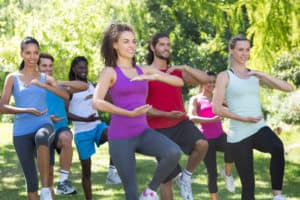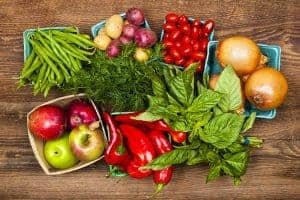Time To Read: 7 minutes
This article was updated on 3 June, 2021
No doubt that you’re aware of the risks of osteoporosis - especially you happen to be of a certain age.
Osteoporosis occurs when bones lose minerals, such as calcium, more quickly than the body can replace them, causing a loss of bone thickness (bone density or mass).
While we tend to think of ‘brittle bones’ in terms of the risk of falls and fractures of major bones, there important small bones that are also at risk.
Did you know osteoporosis also increases the risk of sudden hearing loss?
Korean researchers have found that osteoporosis increases the risk of a sudden sensorineural hearing loss by 40%.
The study analysed data from 68,241 patients aged at least 50 years with a diagnosis of osteoporosis between 2002 and 2013. The patients were identified through Korean Health Insurance Review and Assessment Service National Patient Sample data. Patients with osteoporosis were matched with a control group without osteoporosis.
The researchers found that 0.8% of those with osteoporosis and 0.5% of adults in the control group without the condition experienced sudden sensorineural hearing loss. This means that people with osteoporosis have a 40% increased risk of developing a sudden sensorineural hearing loss.
Research published in May 2021 had similar findings. According to Journal of the American Geriatrics Society women with osteoporosis or LBD (low bone density) had higher multivariable-adjusted relative risk (MVRR) of moderate or worse hearing loss.
Sharon G. Curhan, M.D., from Brigham and Women’s Hospital in Boston, and colleagues conducted a longitudinal cohort study involving 60,821 and 83,078 women in the Nurses’ Health Study (NHS) and Nurses’ Health Study II (NHS II), respectively. The correlations of osteoporosis and LBD, bisphosphonate use, vertebral fracture (VF), hip fracture (HF), and risk for self-reported moderate or worse hearing loss were investigated.
Three little bones make a big difference
There are three small bones in the inner ear: the hammer (malleus), the anvil (incus) and the stapes (stirrup). They form a short chain that crosses the middle ear and transmits vibrations from the eardrum membrane to the liquid of the inner ear. And they too can be subject to the effects of osteoporosis the same as any other bone with the effects greater because the bones are so small.
The Korean study confirms an earlier study from Taiwan that also found a relationship between osteoporosis and sudden sensorineural hearing loss.
According to Osteoporosis Australia, the disease affects more than 1 million Australians. This disease makes bones become brittle leading to a higher risk of breaks than in normal bone.
Risk factors for osteoporosis include:
- inadequate amounts of dietary calcium
- low vitamin D levels
- cigarette smoking
- alcohol intake of more than two standard drinks per day
- caffeine intake of more than three cups of coffee or equivalent per day
- lack of physical activity
- early menopause (before the age of 45)
- loss of menstrual period if it is associated with reduced production of oestrogen, which is vital for healthy bones (the menstrual cycle can cease following excessive dieting and exercise)
- long-term use of medication such as corticosteroids for rheumatoid arthritis, asthma and other conditions.
Some conditions place people at a higher risk of osteoporosis. These conditions include:
- thyroid disease or an overactive thyroid gland
- rheumatoid arthritis
- chronic liver and kidney disease
- conditions that affect the body’s ability to absorb nutrients, such as Crohn’s disease, coeliac disease and other inflammatory bowel conditions.
Osteoporosis is also called a silent disease because there are no obvious symptoms. The only way you might know you have the condition is if you have been tested for it.
But we do have some good news! There are some easy things for you to help keep your bones in their best possible state.
Exercise
Weight-bearing exercises are best for your bones. They’re the ones that force your body to work against gravity as you move. That prompts the body to make new bone.
Weight-bearing exercises include:
- Aerobics
- Climbing stairs
- Dancing
- Jogging
- Tennis and other racket sports
- Running
- Tai chi
- Walking
- Water aerobics
- Yoga
Strength training is also key to preventing osteoporosis. Your muscles pull on your bones when you work them. That builds bone strength. These workouts also make you more flexible and lower the chances that you’ll fall.
Diet
Dairy products - milk, yogurt and cheese are rich in Calcium. Some dairy products are fortified with Vitamin D.
Fish - sardines and salmon (with bones) is an excellent source of Calcium. Oily fish such as salmon, mackerel, tuna and sardines are rich in Vitamin D.
Fruits and vegetables - Go green for Calcium! Kale, okra, Chinese cabbage, dandelion greens, mustard greens and broccoli. Excellent sources of Magnesium include spinach, beet greens, okra, tomato, artichokes, plantains, potatoes, sweet potatoes and raisins. Potassium is another essential element and you can find it in tomatoes, raisins, potatoes, spinach, sweet potatoes, pawpaw, oranges, orange juice, bananas, plantains and prunes. Capsicum, oranges, grapefruit, broccoli, strawberries, brussels sprouts, papaya and pineapples are all rich in Vitamin C. Vitamin K is an important blood clotting agent and are found in dark green leafy vegetables such as kale, collard greens, spinach, mustard greens, turnip greens and brussel sprouts.
Recipes
Cheesy sweet potato and bacon loaf
Milk and cheese are a great source of vitamin D and benefits of potassium in sweet potatoes. This easy recipe is just the thing for cold winter nights and can also be served cold for lunch.
https://www.taste.com.au/recipes/cheesy-sweet-potato-bacon-loaf-recipe/rykheuex
Four-cheese gnocchi alforno
With plenty of cheese, Vitamin C in the capsicum, potassium-rich tomato and potato (in the form of gnocchi), this dish is a tasty way to help fortify your bones.
https://www.taste.com.au/recipes/four-cheese-gnocchi-alforno/ioqqy3ov
Orange baked custards with roasted strawberries
Milk with its Vitamin D and strawberries rich in Vitamin C, makes this dish an impressive and tasty way to get essential minerals
https://www.taste.com.au/recipes/orange-baked-custards-roasted-strawberries/72182826-44f7-41c5-bff8-dee922516e3d

